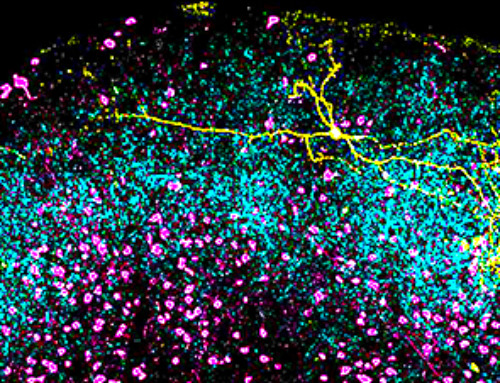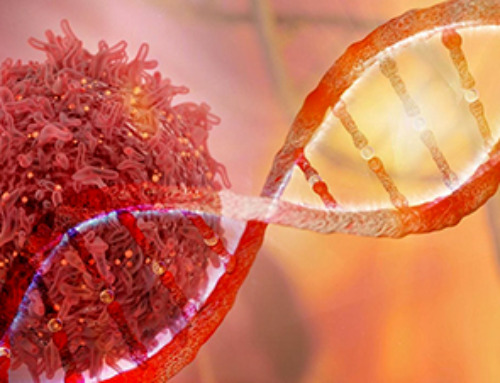A treatment first used more than a century ago, that uses bacteria-killing viruses, is making a comeback in Australia and doctors hope it will help counter a growing crisis of antibiotic-resistant superbugs.
The Alfred hospital in Melbourne has become the first health service in Victoria to begin using the pioneering phage therapy, which involves utilising harmless viruses – known as bacteriophages – to kill germs in cases where traditional antibiotics have failed.
Professor Anton Peleg, head of infectious diseases at The Alfred, said phage therapy was being used for an increasing number of patients battling potentially deadly superbugs, on compassionate grounds.
“They are patients with severe bacterial infections that are either life-threatening, or limb threatening, or function threatening, where they don’t have any other options left,” Peleg said. “It is a salvage treatment pathway.”
However, global interest in the therapy was reawakened recently by the rise of superbugs that have developed a resistance to antibiotics.
“We desperately need novel approaches to attack superbugs, approaches that are different to existing traditional antibiotics,” Peleg said.
Increasingly, phages are now being seen by some scientists as a potential complement or even an alternative to antibiotics, the overuse of which has contributed to increasing bacterial resistance and the advent of the superbug.
The Alfred’s phage therapy program began at the end of last year in partnership with Monash University’s Centre to Impact AMR (antimicrobial resistance), and has already been used to treat people who are severely ill with antibiotic-resistant infections, including patients with cystic fibrosis, who have endured years of chronic lung infections.
Others being referred to the program include those with drug-resistant prosthetic joint or limb infections and severe burn wounds.
“We recently received another referral for a woman with a recurrent urinary tract infection with terribly resistant bacteria,” Peleg said.
According to the World Health Organisation, antimicrobial resistance is a rising threat to global health, jeopardising decades of medical progress and transforming common infections into deadly ones. A UN report suggests yearly deaths from drug-resistant diseases could rise from 700,000 to 10 million in 30 years if no action is taken.
Phage therapy, which is most commonly provided intravenously, can be required for several months. Peleg said patients at The Alfred undergoing the treatment were monitored closely to evaluate the activity of the phage in their bodies.
Peleg said the treatment depended on accurate diagnosis of the bacterial strain causing infection and the phage required to fight it. With billions of different bacteria killing viruses in our natural environment – found in river systems, soil and sewage – sourcing the appropriate phage can be difficult.
To speed up this process, Peleg and his team spent the past four years collecting the most common bacteria that have caused infections at The Alfred. Among them is Staphylococcus aureus bacteria, also known as golden staph and pseudomonas.
The hospital also has an onsite translational phage lab, where staff scour environmental sources, identify phages, then test their activity with a combination of antibiotics. The phages are then produced and packaged into vials by an expert team at Monash University.
“We’ve been storing the most common bacteria causing infection at The Alfred and are looking for phage that have killing activity against those bacteria to develop a phage biobank,” Peleg said. “This allows us to have a cocktail of multiple phages, prepared to use for future patients with bacterial infections.”
He said phage therapy was gaining traction in Australia, with teams in Melbourne and Western Australia treating their first patients recently.
But Iredell said a lack of robust data and large-scale clinical studies had hindered advancements and understanding. In Australia, the treatment is still deemed experimental and is awaiting approval by the Therapeutics Goods Administration.
“It’s our job to be sceptical, and we have to make sure this is safe, but all the data suggests so far that it is safe when it is used properly and the phage is made properly,” Iredell said.
Australians wanting the treatment must fit strict eligibility criteria, including being referred to an infectious disease specialist, who can certify they are already using the appropriate treatment and more was needed.
Iredell and Peleg are part of a group of doctors working to develop a regulatory framework to use phage therapy nationally in the hope it will pave the way for big clinical studies in Australian hospitals.
Experimental cases overseas, including two patients in the US who recovered from intractable infections after being treated with genetically engineered bacteria-killing viruses.
In 2019, a teenager in the UK also made a remarkable recovery after being among the first patients in the world to be given a genetically engineered virus to treat a drug-resistant infection.
“All of us in the phage community often joke for every bacterial problem there is a phage solution because they’re the natural predators and since before humans evolved,” Iredell said. “Antibiotic resistant infections are one of the greatest risks to modern health infrastructure, and we need to act now.”
News
Lipid nanoparticles discovered that can deliver mRNA directly into heart muscle cells
Cardiovascular disease continues to be the leading cause of death worldwide. But advances in heart-failure therapeutics have stalled, largely due to the difficulty of delivering treatments at the cellular level. Now, a UC Berkeley-led [...]
The basic mechanisms of visual attention emerged over 500 million years ago, study suggests
The brain does not need its sophisticated cortex to interpret the visual world. A new study published in PLOS Biology demonstrates that a much older structure, the superior colliculus, contains the necessary circuitry to perform the [...]
AI Is Overheating. This New Technology Could Be the Fix
Engineers have developed a passive evaporative cooling membrane that dramatically improves heat removal for electronics and data centers Engineers at the University of California San Diego have created an innovative cooling system designed to greatly enhance [...]
New nanomedicine wipes out leukemia in animal study
In a promising advance for cancer treatment, Northwestern University scientists have re-engineered the molecular structure of a common chemotherapy drug, making it dramatically more soluble and effective and less toxic. In the new study, [...]
Mystery Solved: Scientists Find Cause for Unexplained, Deadly Diseases
A study reveals that a protein called RPA is essential for maintaining chromosome stability by stimulating telomerase. New findings from the University of Wisconsin-Madison suggest that problems with a key protein that helps preserve chromosome stability [...]
Nanotech Blocks Infection and Speed Up Chronic Wound Recovery
A new nanotech-based formulation using quercetin and omega-3 fatty acids shows promise in halting bacterial biofilms and boosting skin cell repair. Scientists have developed a nanotechnology-based treatment to fight bacterial biofilms in wound infections. The [...]
Researchers propose five key questions for effective adoption of AI in clinical practice
While Artificial Intelligence (AI) can be a powerful tool that physicians can use to help diagnose their patients and has great potential to improve accuracy, efficiency and patient safety, it has its drawbacks. It [...]
Advancements and clinical translation of intelligent nanodrugs for breast cancer treatment
A comprehensive review in "Biofunct. Mater." meticulously details the most recent advancements and clinical translation of intelligent nanodrugs for breast cancer treatment. This paper presents an exhaustive overview of subtype-specific nanostrategies, the clinical benefits [...]
It’s Not “All in Your Head”: Scientists Develop Revolutionary Blood Test for Chronic Fatigue Syndrome
A 96% accurate blood test for ME/CFS could transform diagnosis and pave the way for future long COVID detection. Researchers from the University of East Anglia and Oxford Biodynamics have created a highly accurate [...]
How Far Can the Body Go? Scientists Find the Ultimate Limit of Human Endurance
Even the most elite endurance athletes can’t outrun biology. A new study finds that humans hit a metabolic ceiling at about 2.5 times their resting energy burn. When ultra-runners take on races that last [...]
World’s Rivers “Overdosing” on Human Antibiotics, Study Finds
Researchers estimate that approximately 8,500 tons of antibiotics enter river systems each year after passing through the human body and wastewater treatment processes. Rivers spanning millions of kilometers across the globe are contaminated with [...]
Yale Scientists Solve a Century-Old Brain Wave Mystery
Yale scientists traced gamma brain waves to thalamus-cortex interactions. The discovery could reveal how brain rhythms shape perception and disease. For more than a century, scientists have observed rhythmic waves of synchronized neuronal activity [...]
Can introducing peanuts early prevent allergies? Real-world data confirms it helps
New evidence from a large U.S. primary care network shows that early peanut introduction, endorsed in 2015 and 2017 guidelines, was followed by a marked decline in clinician-diagnosed peanut and overall food allergies among [...]
Nanoparticle blueprints reveal path to smarter medicines
Lipid nanoparticles (LNPs) are the delivery vehicles of modern medicine, carrying cancer drugs, gene therapies and vaccines into cells. Until recently, many scientists assumed that all LNPs followed more or less the same blueprint, [...]
How nanomedicine and AI are teaming up to tackle neurodegenerative diseases
When I first realized the scale of the challenge posed by neurodegenerative diseases, such as Alzheimer's, Parkinson's disease and amyotrophic lateral sclerosis (ALS), I felt simultaneously humbled and motivated. These disorders are not caused [...]
Self-Organizing Light Could Transform Computing and Communications
USC engineers have demonstrated a new kind of optical device that lets light organize its own route using the principles of thermodynamics. Instead of relying on switches or digital control, the light finds its own [...]





















